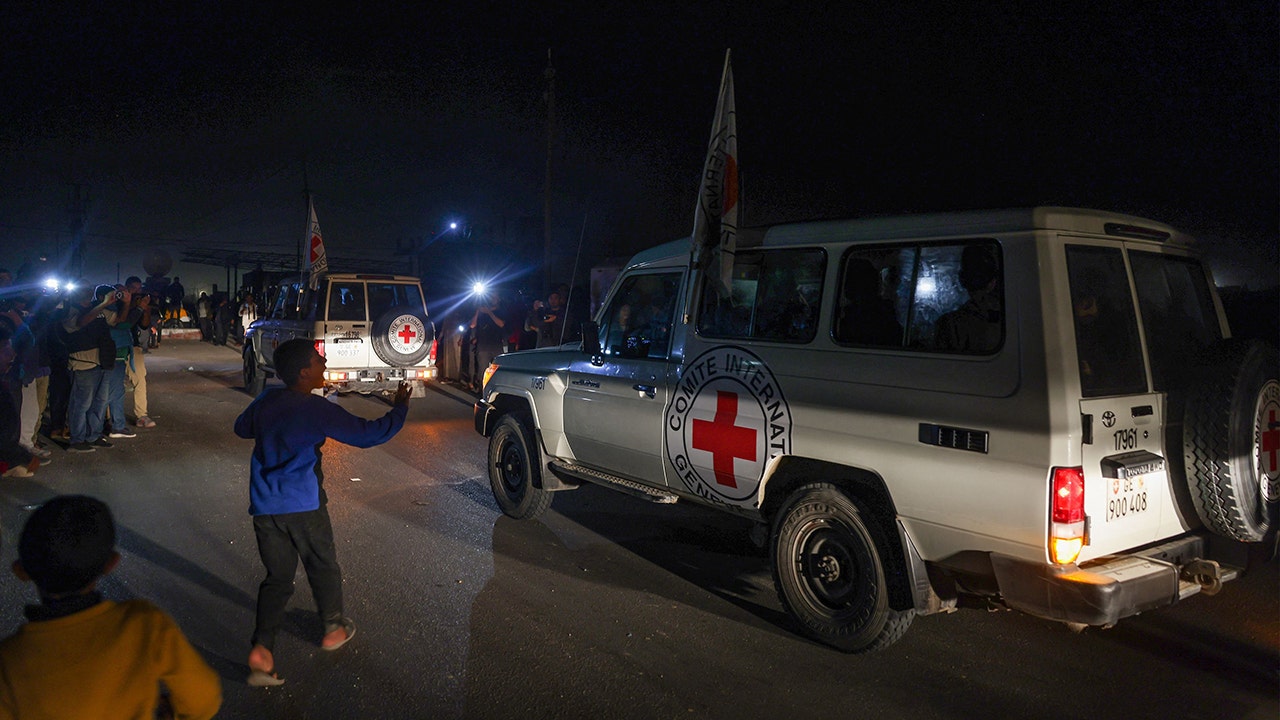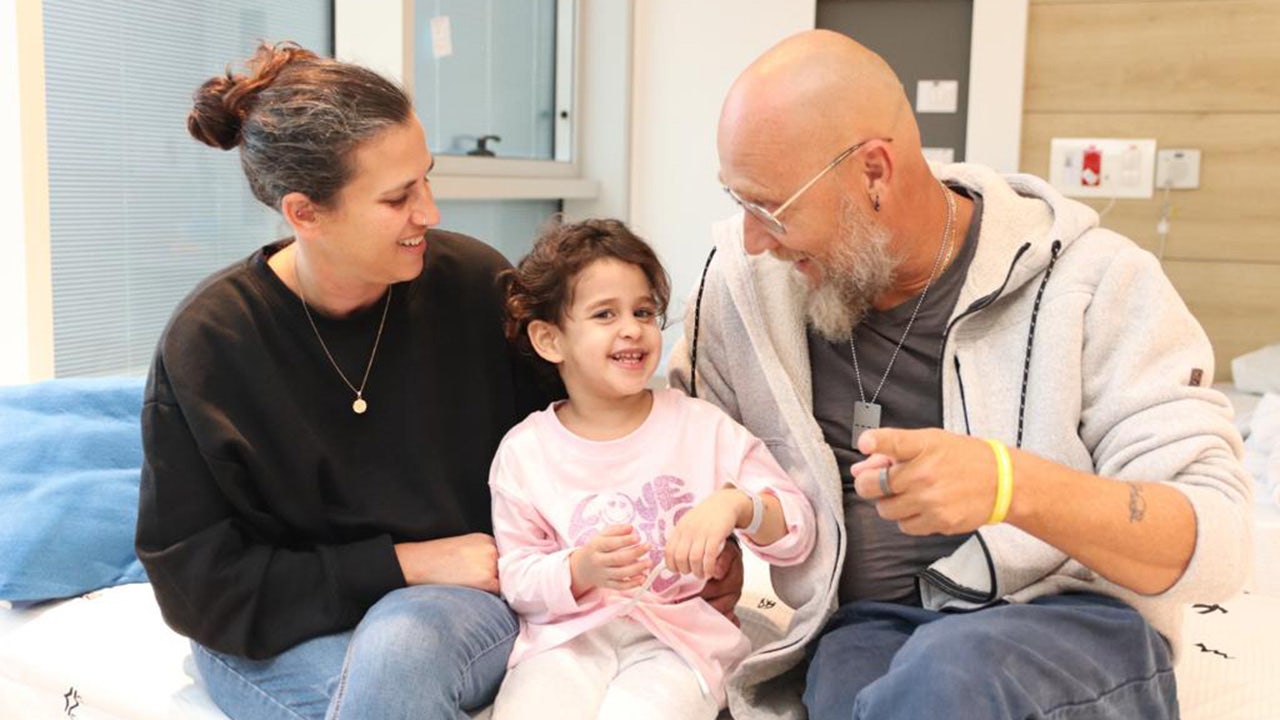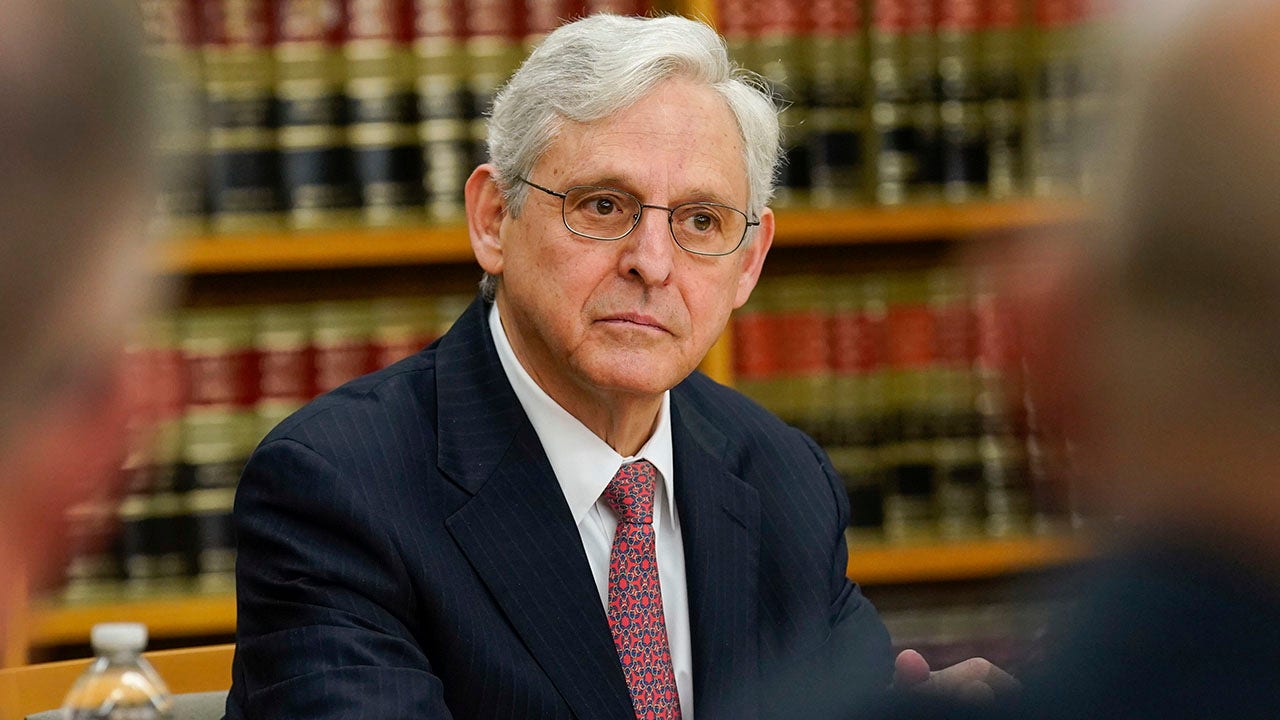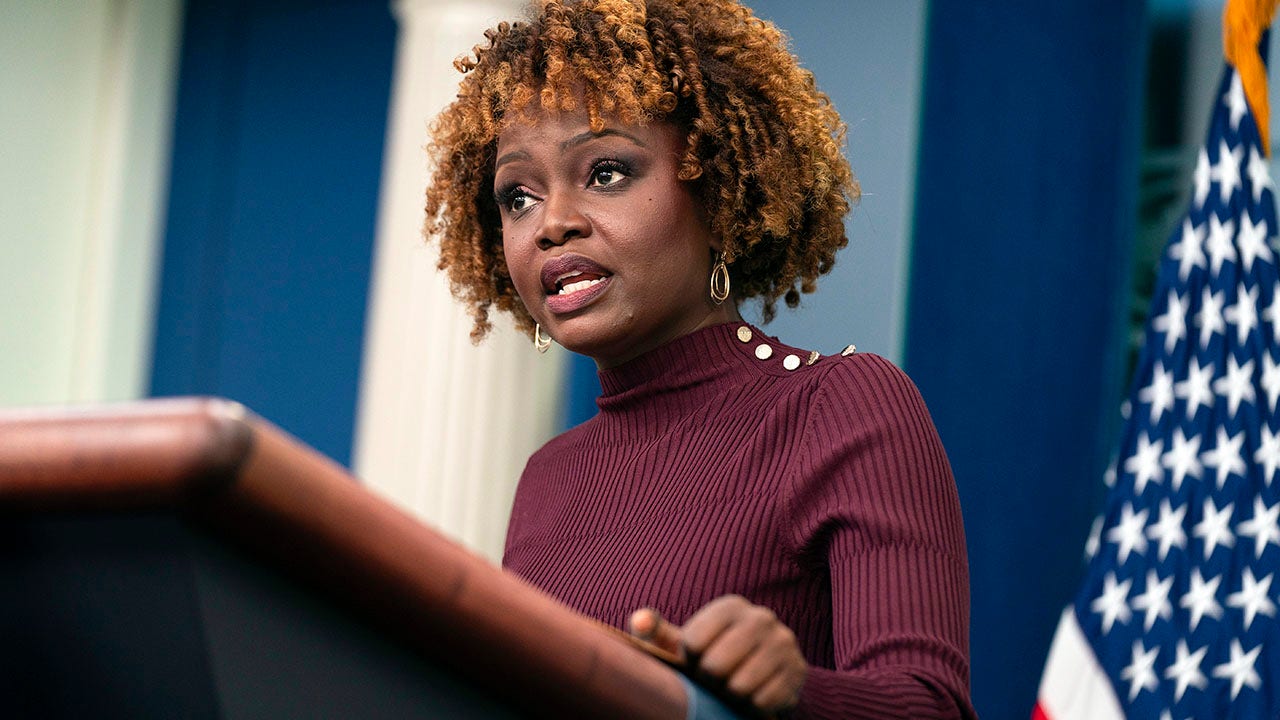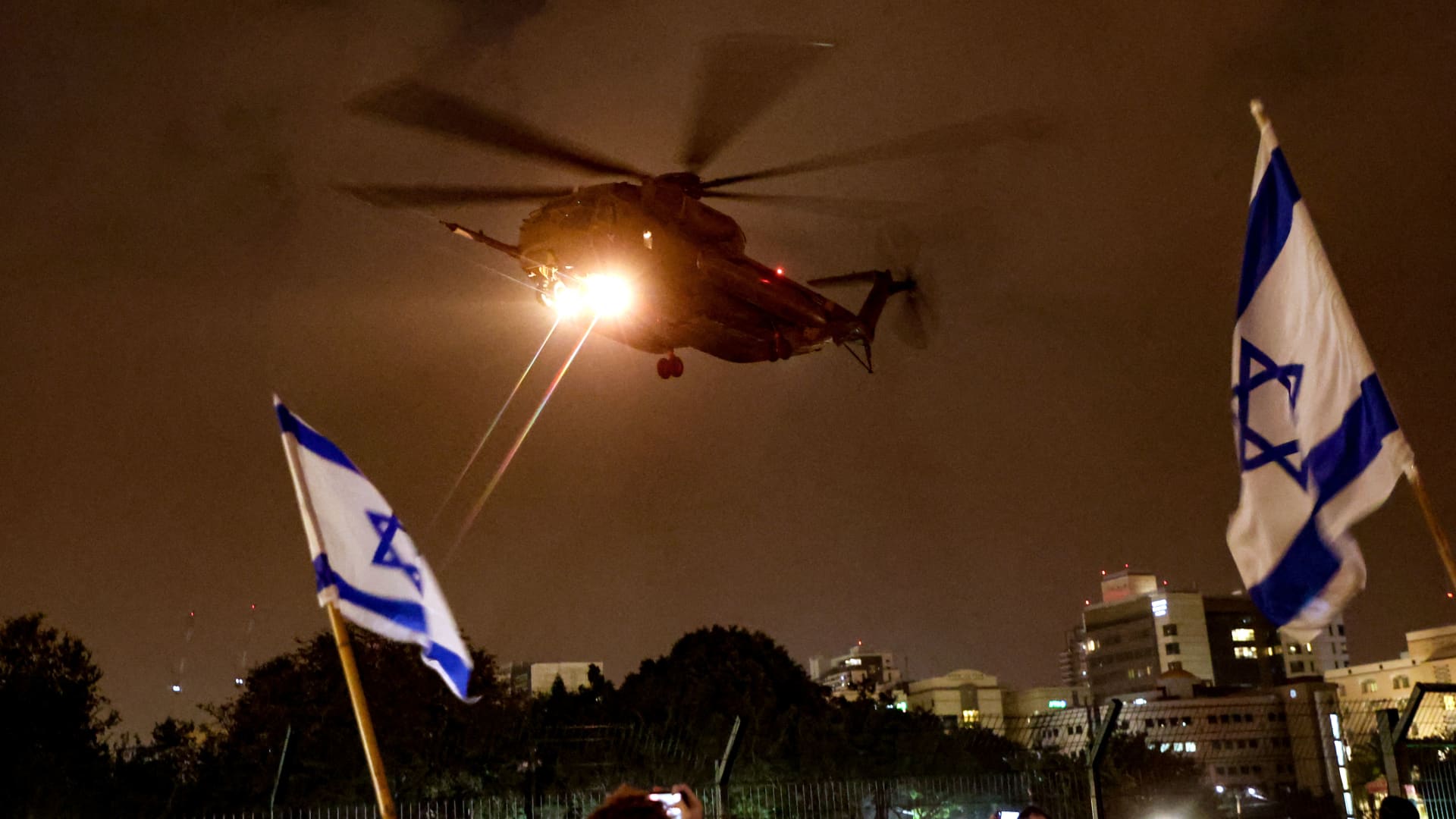Hamas releases third group of hostages as part of truce, says it will seek to extend deal
DEIR AL-BALAH, Gaza Strip (AP) — The fragile cease-fire between Israel and Hamas was back on track Sunday as the militants freed 17 more hostages, including 14 Israelis and the first American, in a third exchange under a four-day truce that the United States said it hoped would be extended. In turn, Israel released 39 Palestinian prisoners.
Most hostages were handed over directly to Israel, waving to a cheering crowd as they arrived at an air force base. Others left through Egypt. Israel's army said one was airlifted to a hospital, and the director of Soroka Medical Center said Elma Avraham, 84, was in life-threatening condition as “a result of an extended period of time when an elderly woman was not taken care of as needed.”
The youngest hostage released was Abigail Edan , a 4-year-old girl and dual Israeli-American citizen whose parents were killed in the Hamas attack that started the war on Oct. 7 .
“What she endured was unthinkable,” U.S. President Joe Biden said of the first American freed under the truce. He did not know her condition and did not provide updates on other American hostages. Biden said his goal was to extend the cease-fire deal as long as possible.
In all, nine children ages 17 and younger were on the list, according to Israeli Prime Minister Benjamin Netanyahu’s office. Three more Thai nationals were released. Separately, Hamas said it released a Russian hostage “in response to the efforts of Russian President Vladimir Putin."
The three Thai nationals were undergoing health checks at a medical center in Israel and brought the total number of Thai hostages released to 17, Thailand's Foreign Ministry said. The ministry said it was pursuing efforts for the safe release of the 15 remaining Thai hostages. Thais working in Israel are mostly employed as semi-skilled farm laborers, at wages considerably higher than those at they can earn at home.
The Palestinian prisoners released were children and young men, ages 15-19, largely accused of public disorder, property damage and in some cases causing or threatening physical harm to Israeli officers by throwing stones and Molotov cocktails. Many were scooped up from protests and confrontations with troops. In turn, many Palestinians view prisoners held by Israel , including those implicated in attacks, as heroes resisting occupation.
A fourth exchange is expected on Monday — the last day of the cease-fire during which a total of 50 hostages and 150 Palestinian prisoners are to be freed. Most are women and minors.
International mediators led by the U.S., Egypt and Qatar were trying to extend the cease-fire that began Friday.
“We can get all hostages back home. We have to keep pushing,” said two of Edan’s relatives, a great aunt and cousin, in a statement thanking mediators.
Hamas for the first time said it would seek to extend the deal by looking to release a larger number of hostages. Netanyahu issued a statement saying he had spoken to Biden and reiterated his offer to extend the cease-fire by an additional day for every 10 hostages Hamas releases. But he said Israel would resume its offensive “with all of our might” once the truce expires.
Ahead of the latest hostage release, Netanyahu donned body armor and visited the Gaza Strip, where he spoke with troops.
“At the end of the day we will return every one,” he said of the hostages, adding that “we are continuing until the end, until victory. Nothing will stop us.” It was not clear where he went inside Gaza.
This is the first significant pause in seven weeks of war , marked by the deadliest Israeli-Palestinian violence in decades. More than 13,300 Palestinians have been killed, roughly two thirds of them women and minors, according to the Health Ministry in Hamas-ruled Gaza , which does not differentiate between civilians and combatants. The war has claimed more than 1,200 Israelis, mostly civilians killed in the initial attack.
In New York, hundreds of Jewish protesters and allies demanding a permanent cease-fire in Gaza shut down vehicle traffic on the Manhattan Bridge in both directions for several hours Sunday. A New York police spokesperson said one person was arrested for reckless endangerment and two others were issued summonses for disorderly conduct.
LIFE IN CAPTIVITY
Hamas ’ military wing released a video showing militants handing over the hostages to Red Cross workers and paramedics, with some of the balaclava-wearing fighters and hostages waving goodbye to each other.
Families from the southern Israeli town of Kfar Aza embraced, cried, and applauded Sunday at the news that hostages from their town had arrived in Israel. More than 70 members of the kibbutz of around 700 people were killed and 18 were kidnapped.
The freed hostages have mostly stayed out of the public eye. Hospitals said their physical condition has largely been good. Little is publicly known about the conditions of their captivity.
Merav Raviv, whose three relatives were released on Friday, said they had been fed irregularly and lost weight. One reported eating mainly bread and rice and sleeping on a makeshift bed of chairs pushed together. Hostages sometimes had to wait for hours to use the bathroom, she said.
Pressure from families has sharpened the dilemma facing Israel’s leaders, who seek to eliminate Hamas as a military and governing power. Hamas and other militant groups seized around 240 people during the incursion into southern Israel that ignited the war. Fifty-eight have been released, one was freed by Israeli forces and two were found dead inside Gaza.

